Showcased below is a collection of photographs illustrating work designed and directed by me with the assistance of a highly specialized group of teachers, landscape contractors, architects, students, laborers and clients. Several opportunities over the last thirty years have created this unique demonstration garden portfolio. It is my hope to be able to share this experience with those in need of assistance developing their own garden ideas.
Tempe Women’s Club Xeriscape Demonstration Garden Tempe, Arizona 2001 – 2018
My renovations to the City of Tempe Demonstration Garden began in 2001. Now a showcase for low water use plants and irrigation practices. The garden features include water harvesting details, storm water diversion, dry farming terracing, low water use plants featured in the AMWA “Landscape Plants of the Arizona Desert” , high efficiency turf Irrigation exhibits, four different types of warm season grasses, drip irrigation details, and interpretive signage.

Residential front yard exhibit, plants designed by the legendary Ron Dinchak, irrigation, broken concrete walk and water harvesting by RBond, photographed 2017
http://www.tempe.gov/city-hall/public-works/water/water-conservation/xeriscape-demonstration-garden
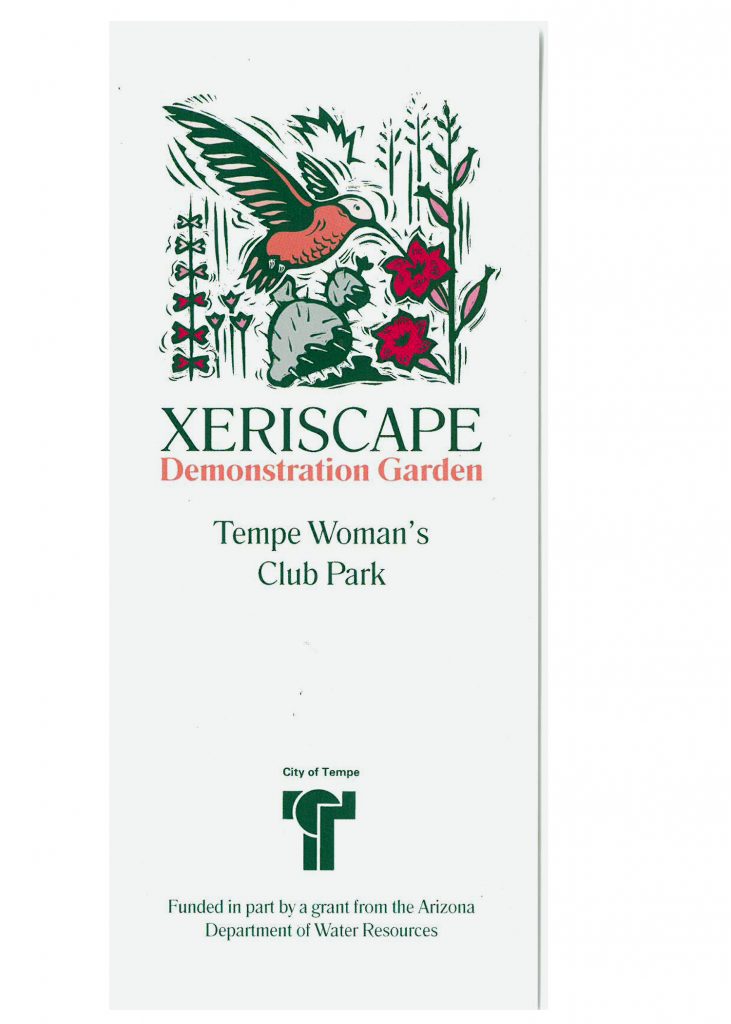
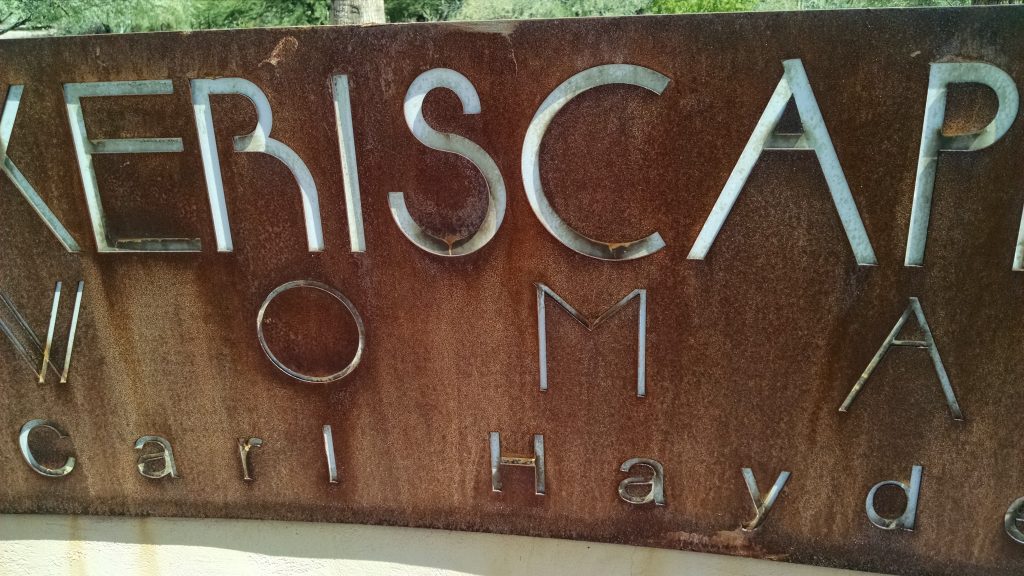
A new sign installed in 2014 ties the demo garden into the Carl Hayden Campus of Sustainability theme. I worked with the city Historic Preservation Architect, representatives from the Arizona Historical Museum and the Rio Salado Foundation to develop a common sign theme tying the above adjacent projects together. See Rio Salado Foundation web site for details on the CHCS.
http://www.tempe.gov/city-hall/community-development/tempe-town-lake/nature-and-conservation/carl-hayden-campus-of-sustainability

Reconstructed agave terraces demonstrate early terrace farming techniques practiced by the Hohokam in the area. Photo RBond
High Efficiency Turf Irrigation Product Exhibit
The existing large turf retention basin was an aggregate of a dozen or more perianal weeds. The irrigation was a 25 year old plus four station Hunter I 20 system with a conventional controller. At city counsels request in 2015 a new turf exhibit was developed. The new turf irrigation includes several manufactures high efficiency spray nozzles, a flow sensor, master valve, rain sensor and a smart controller. For this unique exhibit I developed the foot print on drafting paper configuring the turf islands around trees, picnic benches and storm water out falls. Once laid out, Landscape Architect Tim McQueen ASLA was contracted to CADD the irrigation system and prepare the contract documents. Each island was further specified to use one of the various types of drought tolerant turfs currently available at West Coast Turf. Several contractors were then hired to complete the exhibit.
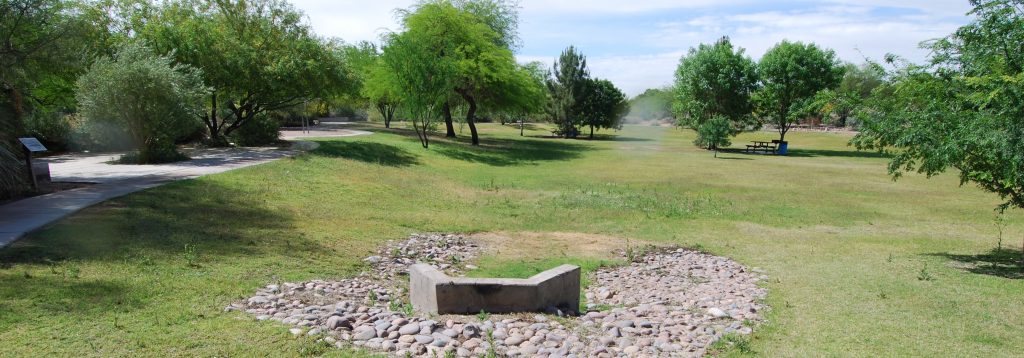
Original retention basin and common Bermuda and assorted weeds, in the summer 2014. Photo RBond
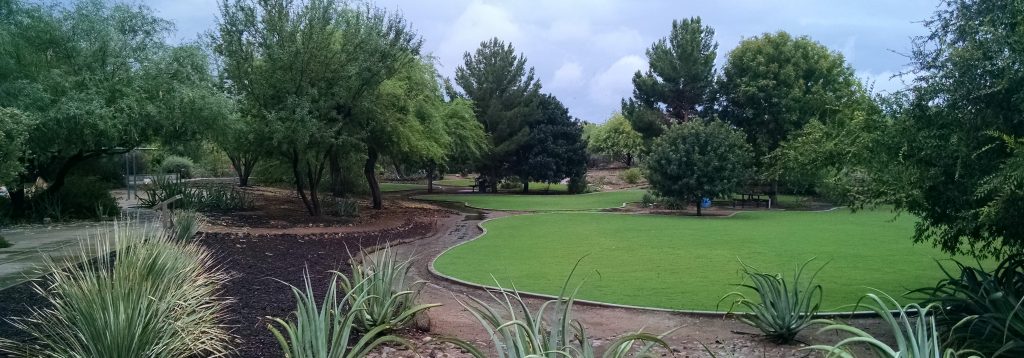
First winter with the converted retention basin overseeded with Perennial Rye grass, winter 2015. Photo RBond
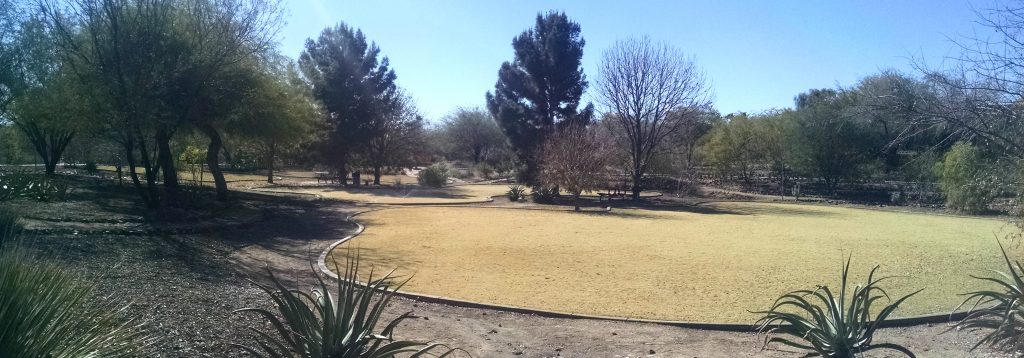
Dormant BoBSod, in the winter of 2016. Photo RBond
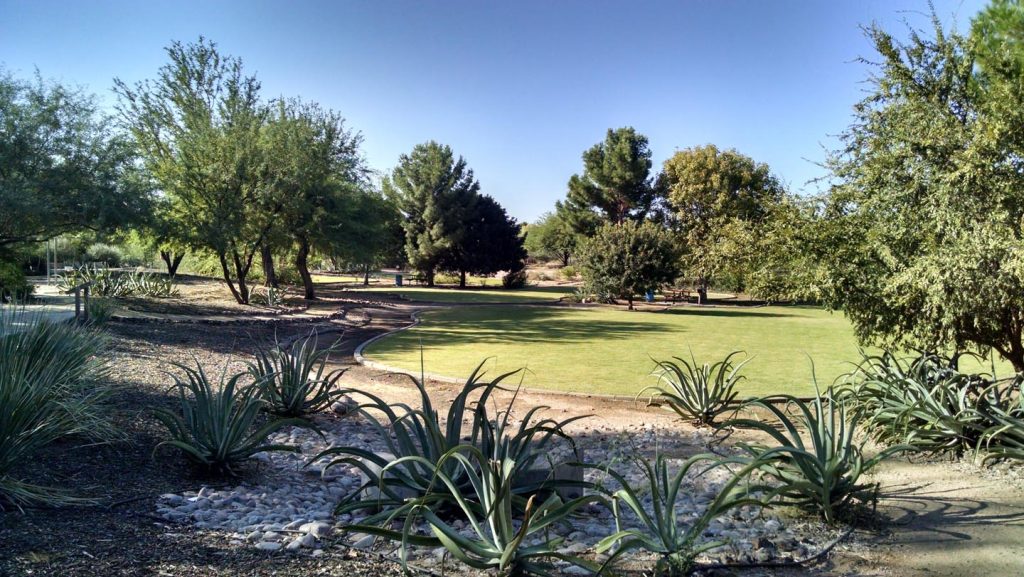
Warm Season BoBSod in the summer 2017. Photo RBond
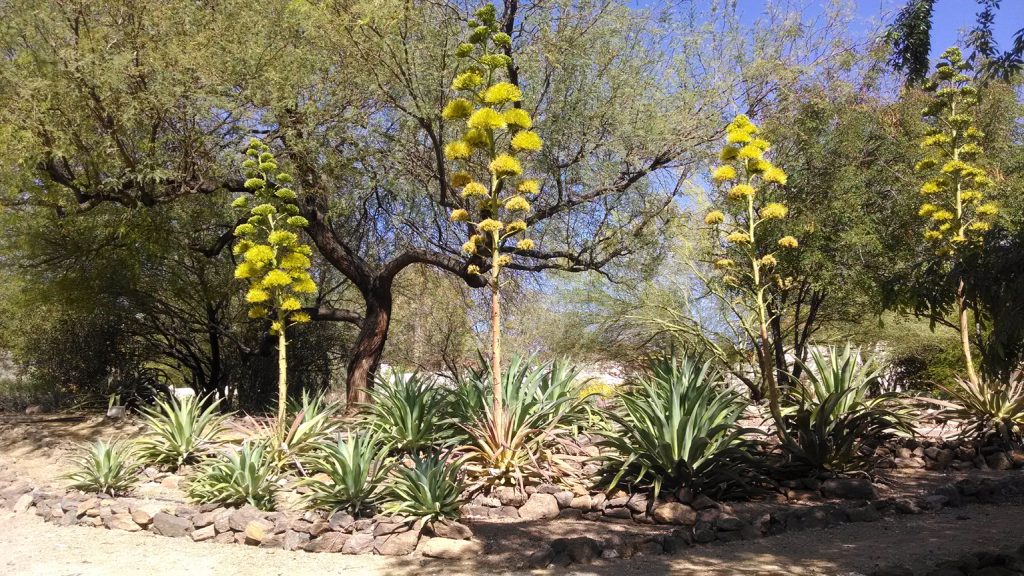
Agave terraces with Smooth Agave (Agave desmettiana) and rock alignments added after the central retention turf basin was converted to a smaller turf area. Photo RBond
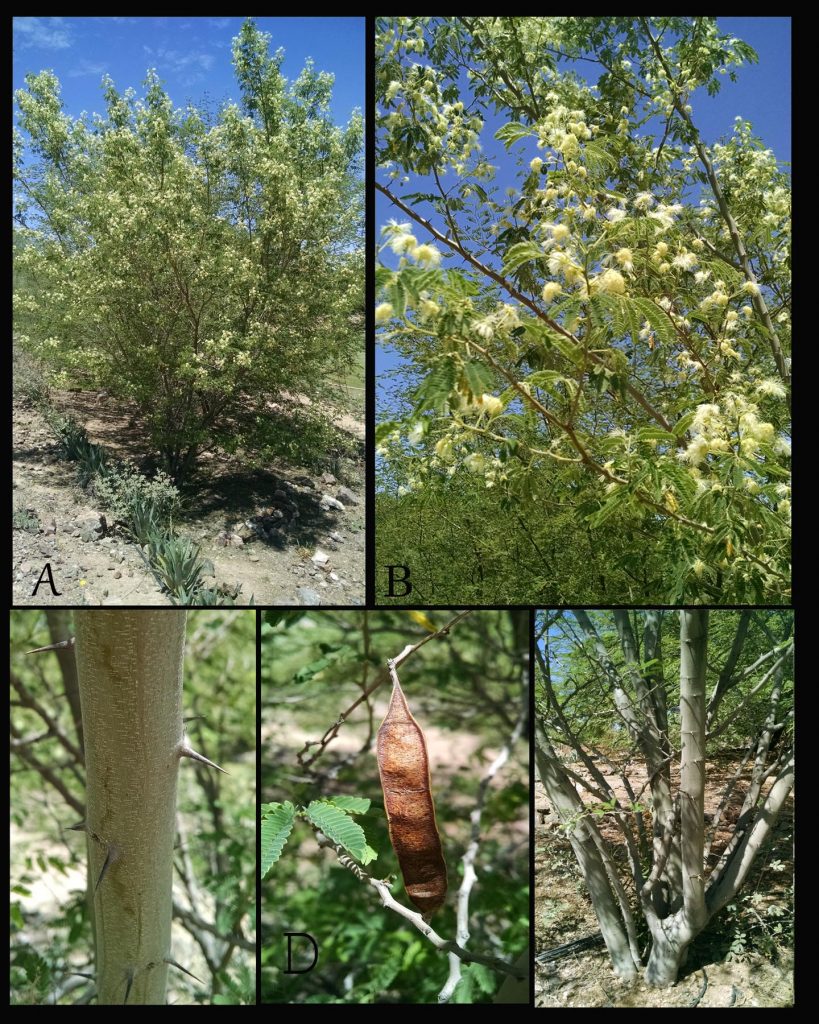
Donation from AZT Nursery, Tenaza (Pithecellobium pallens) planted in 2004 and on display in the agave terraces. photo Rbond 2018
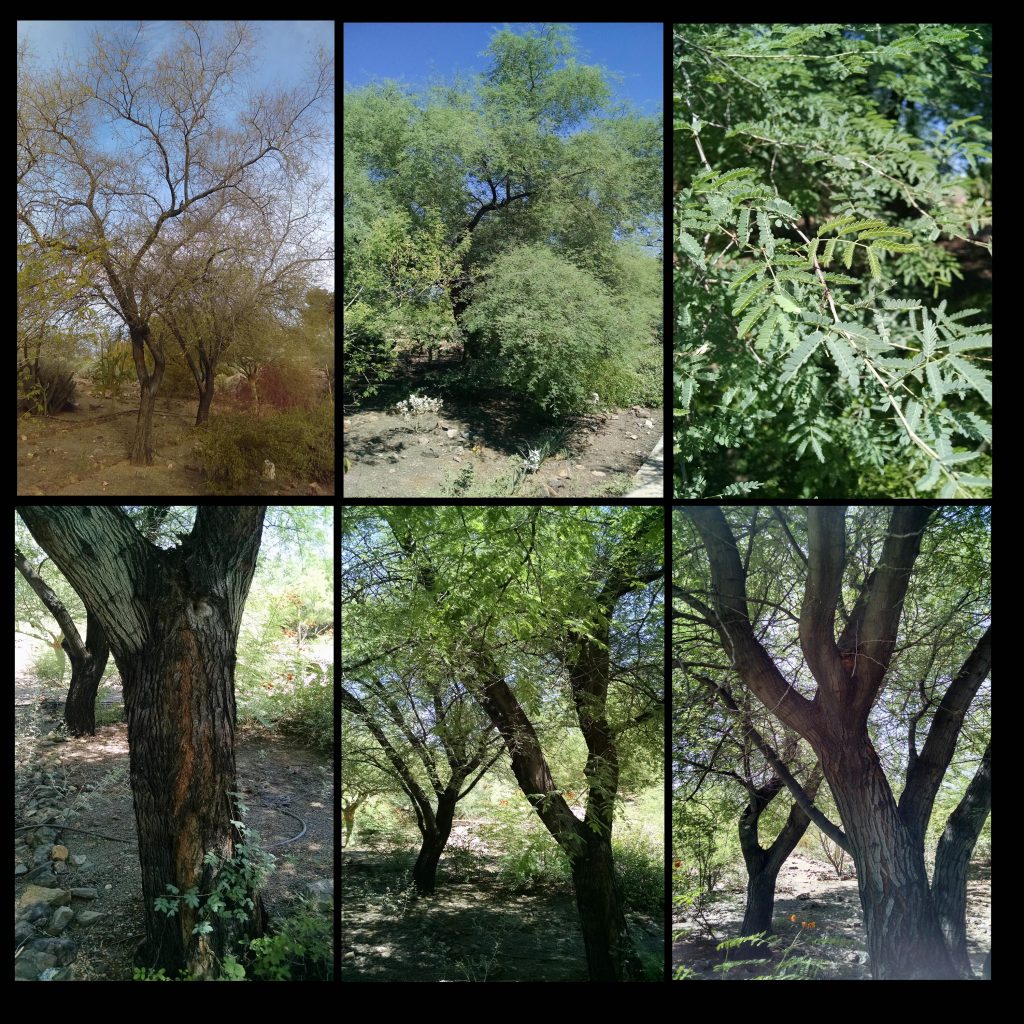
Donation from AZT Nursery, Mexican Ebony (Pithecellobium mexicanum) planted in 2004 Top – WINTER and SUMMER foliage. Photo RBond 2018
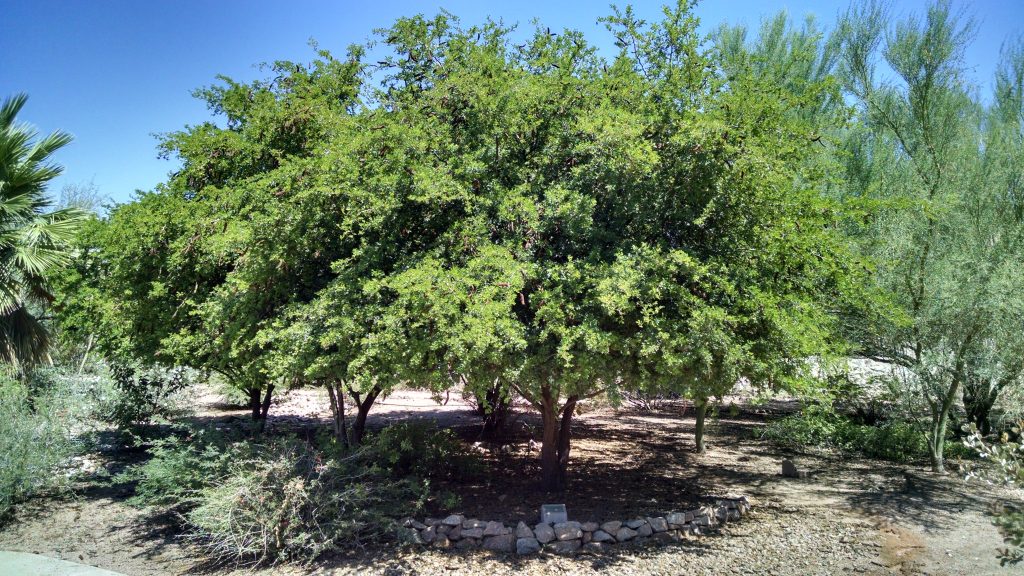
Donation from AZT Nursery, Texas Ebony (Pithecellobium flexicaule) Planted 2004. Photo RBond 2018
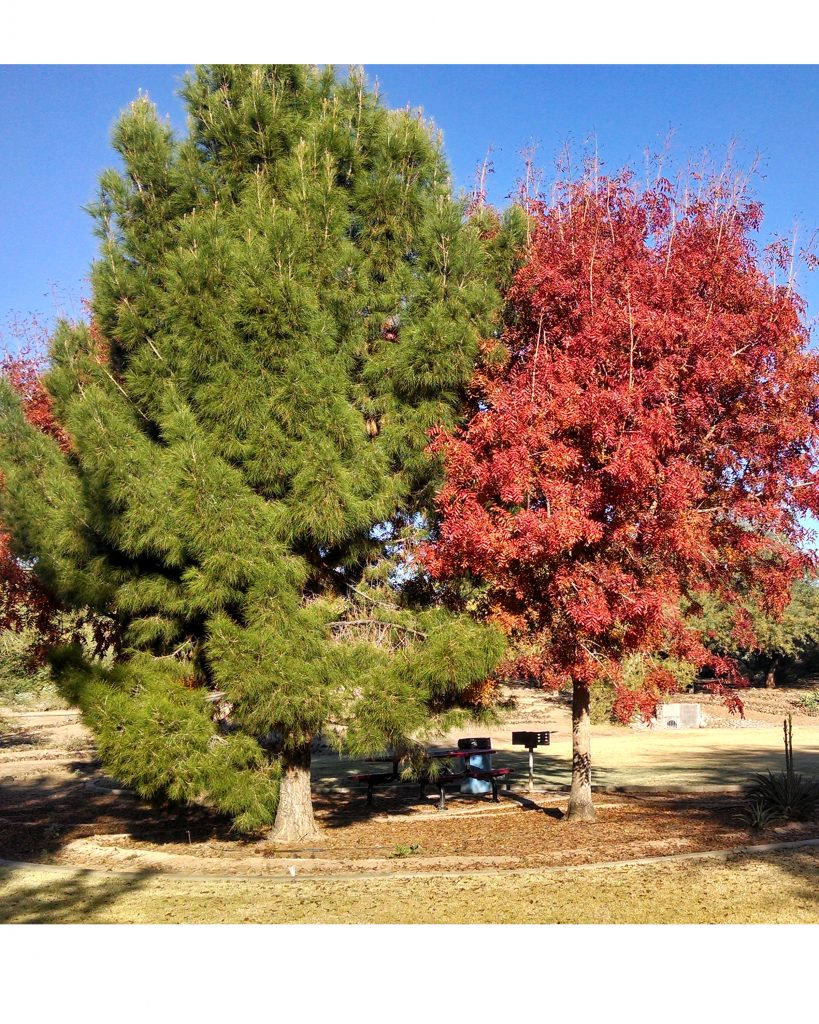
Afghan Pine (Pinus Eldarica/24″ Box/Mountain States Nursery) and Chinese Pistache (Pistacia chinensis/24″ Box /Mountain States Nursery) in fall color planted 2004. Photo RBond 2018
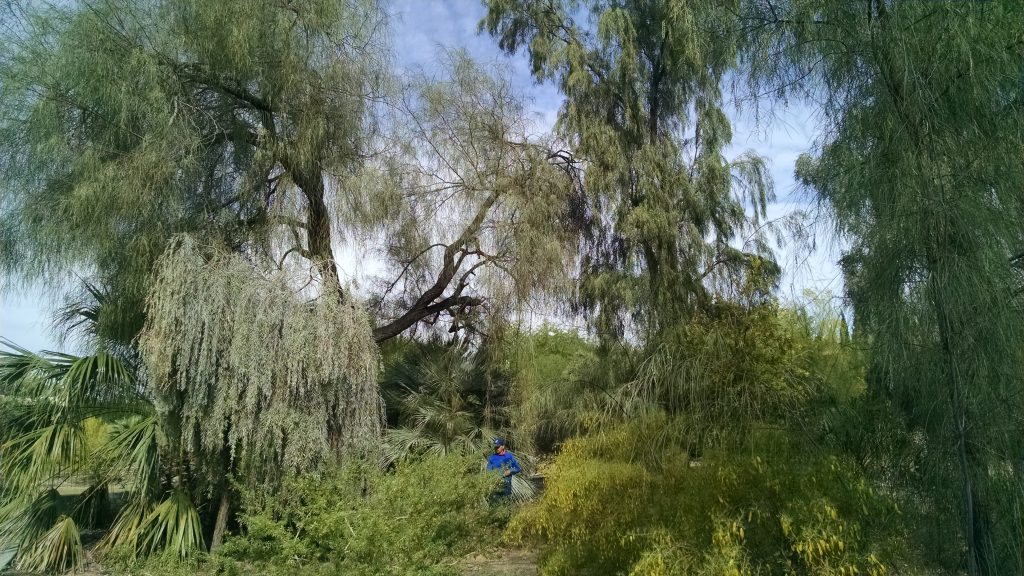
Donated Australian plants, from the Outback Nursery, Landscapes of the Fast and Famous, planted 2004-2017. Photo RBond
The Glendale Xeriscape Demonstration Garden Glendale, Arizona 1994 – 2001
One of the first municipal demonstration gardens established in the valley the Glendale Xeriscape Demonstration Garden features low water use plant collections and other water conservation details to assist homeowners in designing a low water use landscape or garden. I was contracted in 1994 while attending Glendale Community College to assist in completing the garden for the City of Glendale Water Conservation Office. In this period, I designed and planted the cacti garden, the palm collection in the center parking Islands and the peripheral areas around the parking lot. The biogeographic plant collection to the west of the parking area since removed.
https://www.glendaleaz.com/WaterConservation/xeriscapegarden.cfm#Cactus
Cactus Garden
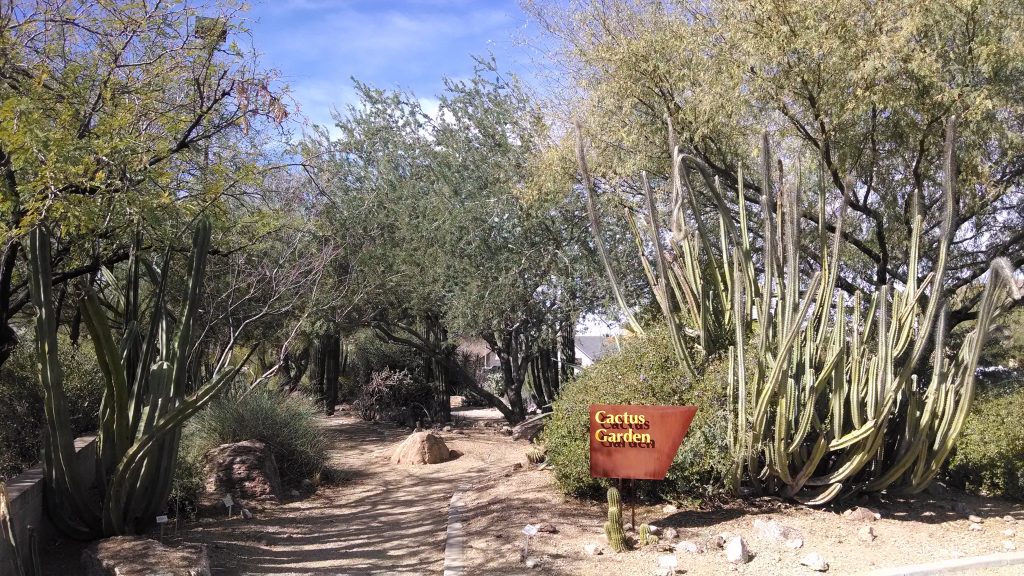
Glendale Xeriscape Garden, Cacti collection, Photographed 2017 Designed/planted/maintained by me 1994 – 2001. Photo RBond
Before

Dave Shultz (City of Glendale,Water Conservation Coordinator), RBond (City of Glendale, later City of Tempe), Dr. Don Pinkava, and former graduate students, Dr. Jon Rebman (later San Diego Natural History Museum), Dr. Steffi Ickert-Bond (later University of Alaska Museum of the North) assist in the identification of hundreds of donated cacti. Photographed by Raul Puente (later Desert Botanical Garden) in 1994.
After
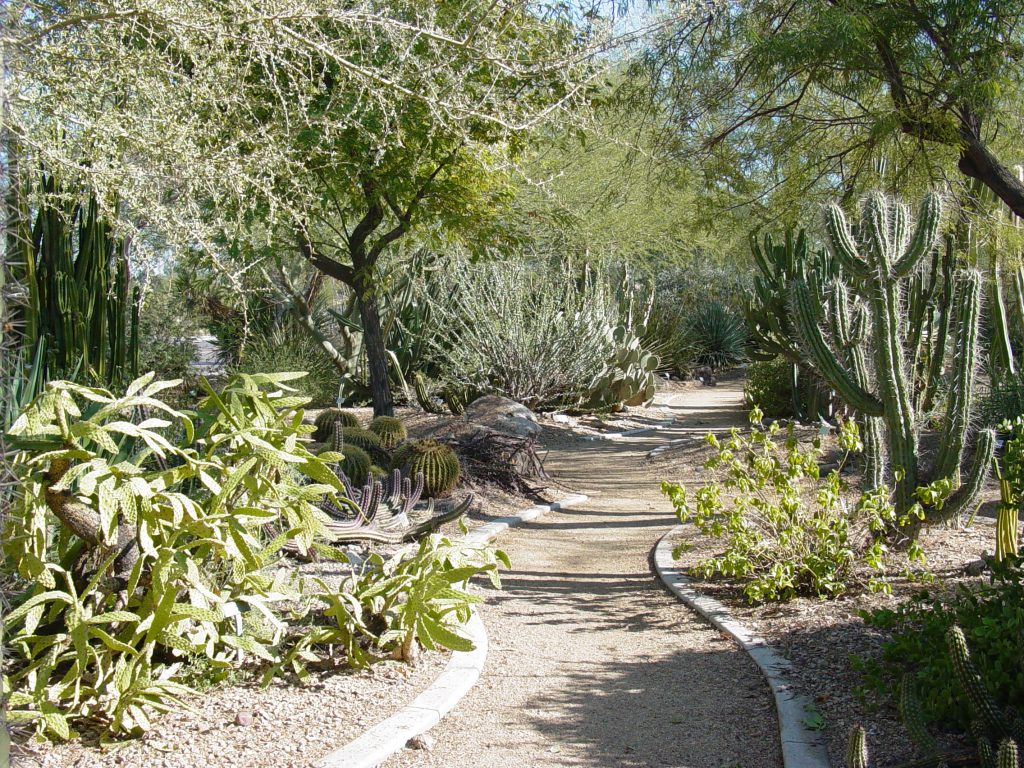
The exotic cacti section photographed in 2009. Photo RBond
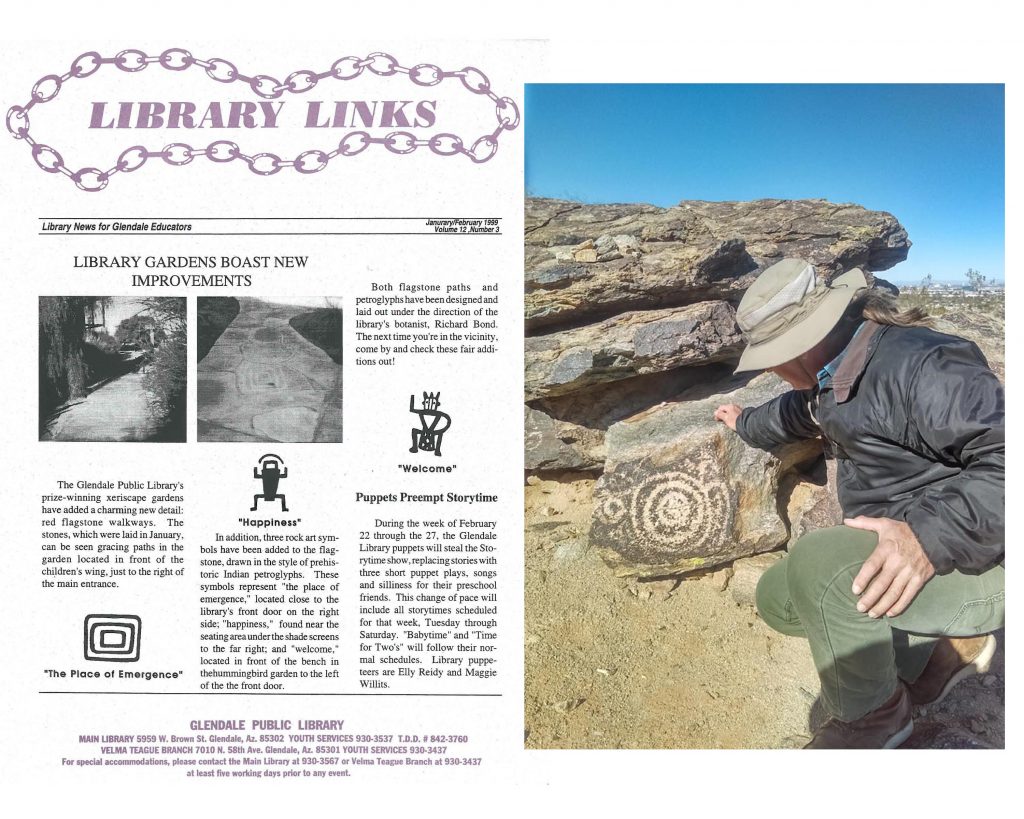
Native American rock art details added to a new flag stone front walk I installed in the 90s. Symbols taken from Easy Field Guide to ROCK ART SYMBOLS of the Southwest by Rick Harris 1998, Right – RBond at SMountain.

Early cumminity intrest, Arizona Rebublic July 18, 1997 Photograph taken in 1997 looking east shortly before the completion of the Cacti Garden.
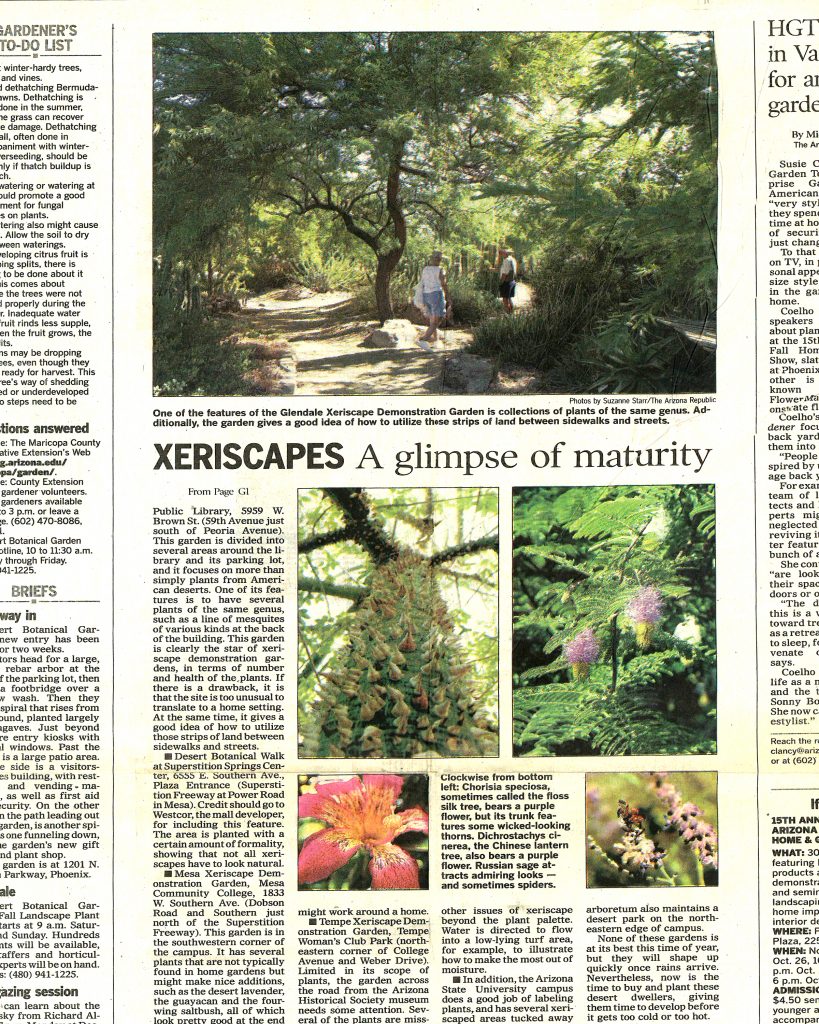
Arizona Republic, October 17th 2001 Above AZ Republic photograph taken in 2001 from the same angle only four years after the completion of the cacti garden.
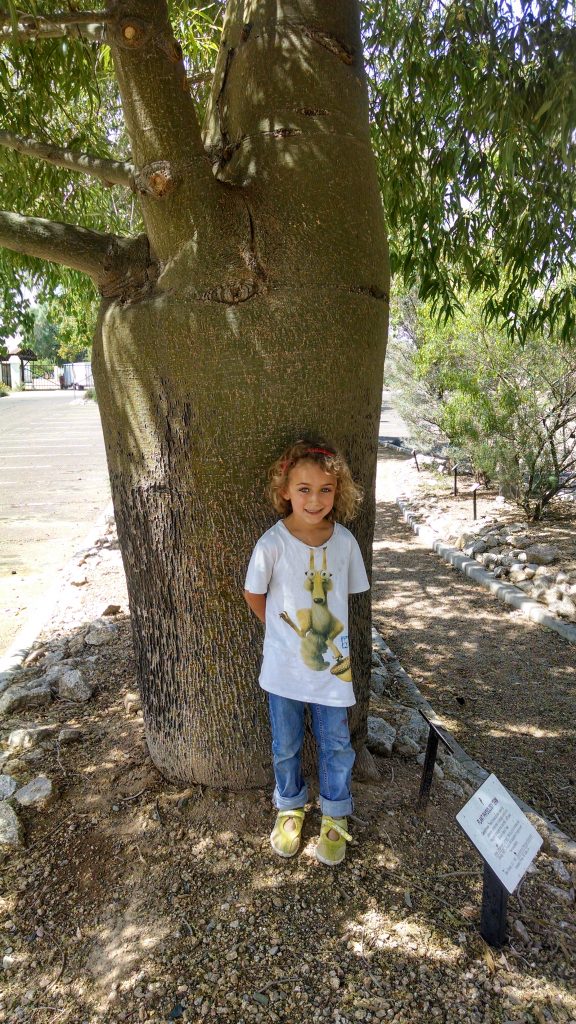
A true caudiciform, Queensland bottle tree (Brachychiton rupestris) 15 gal/ Paradise Wholesale Nursery, planted in 1995. Photo RBond 2016
What is a caudiciform?
“This is any plant that forms a caudex, or a fat, succulent base/trunk/root. They are also referred to as ‘Fat Plants, or Fat-bottomed Plants’. Those with thick, fat stems/trunks with few branches are called ‘Pachycauls’. This swollen root or stem is used for water or food storage, allowing the plant long periods of survival without water or other forms of nutrition. Missing from the plant files is this description, which is too bad. Not all caudiciforms fit easily into the category of cactus and succulents, but most do. However, there are caudiciform trees (like Baobab trees), caudiciform vines (like morning glory relatives, members of the grape family, some passion vines) and members of the cucumber family, periwinkles, pelagoniums, milkweeds, yam family, and of course, cactus, Euphorbia, cycads and other succulents. There are over 100 genera of plants that have species that can at least loosely be described as caudiciforms”. Dave’s Garden
Before

Arizona State University Professor Dr. Don Pinkava, and former graduate students Dr. Steffi Ickert Bond and Dr. Jon Rebman assist in cacti identification. Photo RBond 1994
After
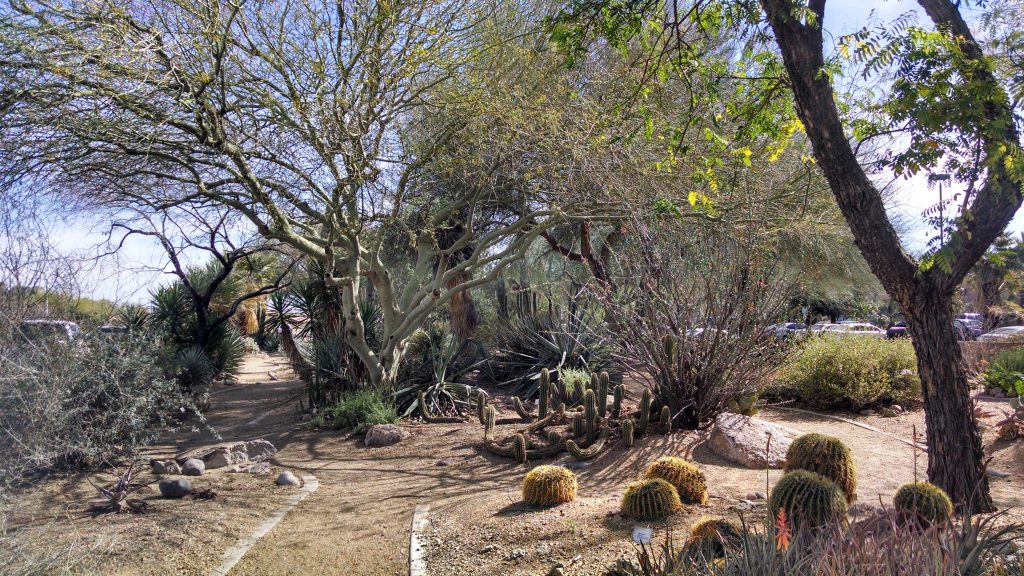
Exotic Cacti collection looking east from same location above in the AZ Republic, photographed 2018. RBond 1994
Before
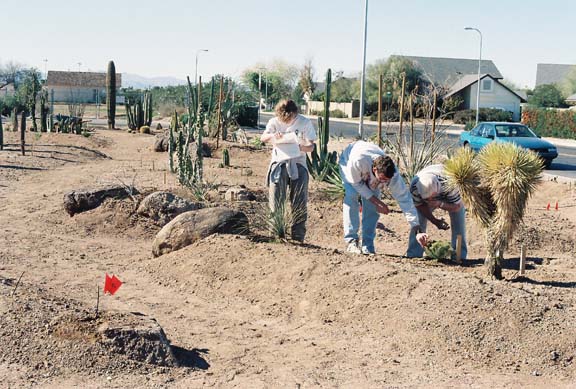
The cacti of Arizona collection photographed from same location below in 2009. Photo by RBond
After
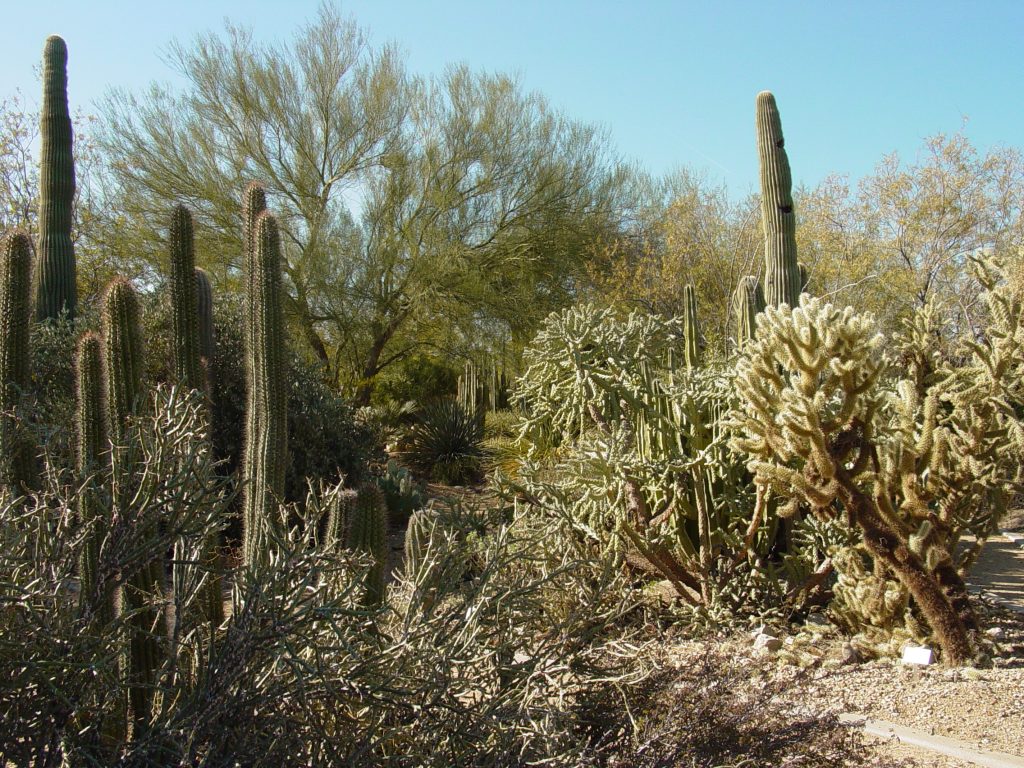
The Cacti of Arizona, donated by numerous Glendale residents, several books on Cacti were deposited in the library stacks. Photo Rbond
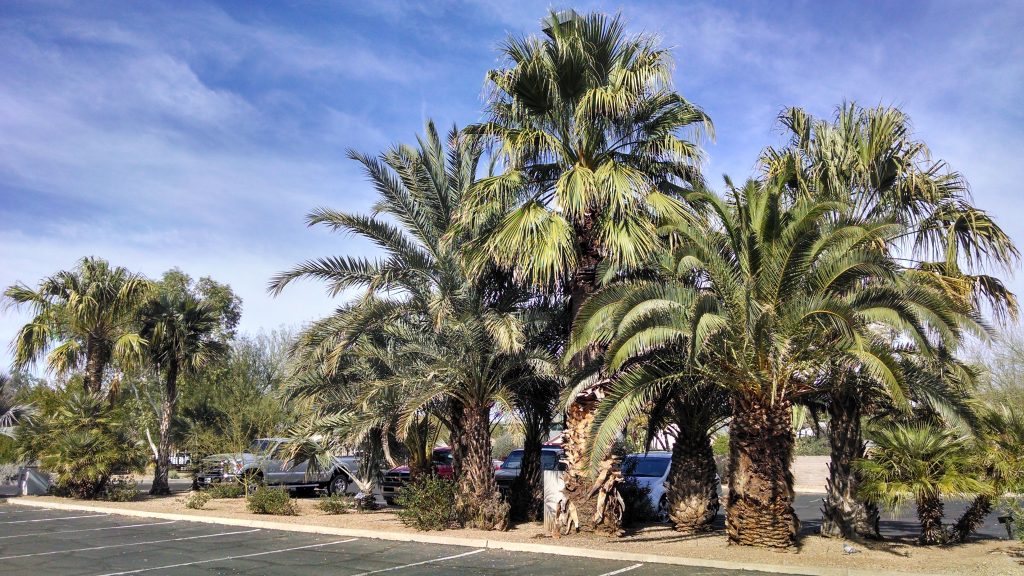
Palm Collection photographed in 2018, shown Canary Island Date Palm (Phoenix canariensis) Mexican Fan Palm (Washingtonia robusta) San Jose Hesper Palm (Sabel brandegeei) and (Sabel umbraculifera) Several books on palms and cacti were deposited in the library stacks. Photo RBond 2018
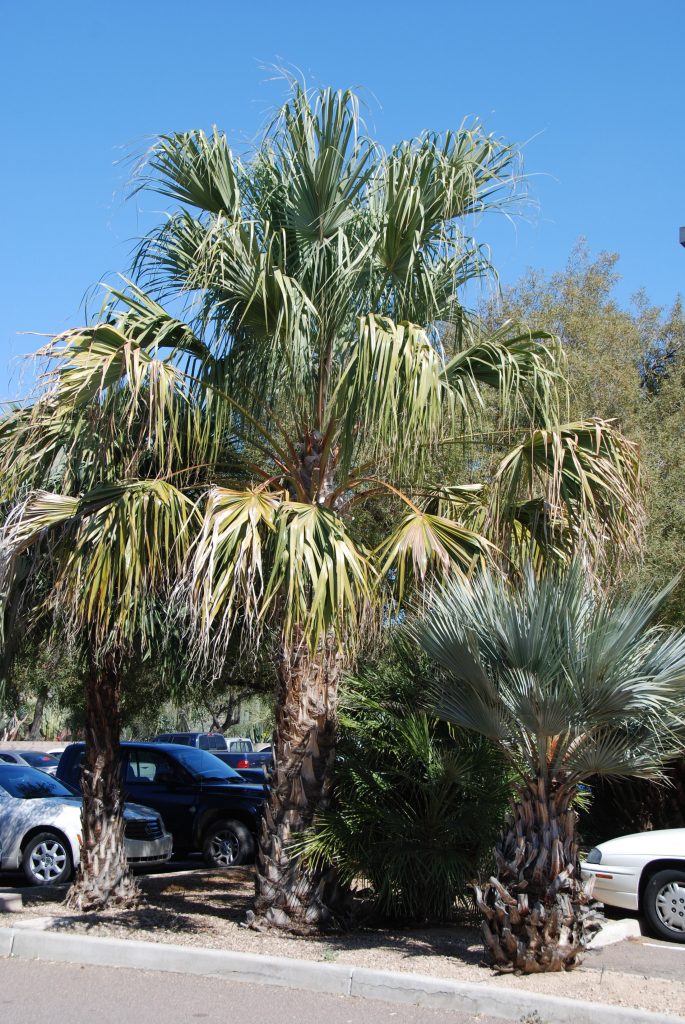
Australian Red Cabbage Palm (Livistona mariae)15 gal/Tree Land Nursery and Mexican blue Palm (Brahea armata)24″Box, Tree Land Nursery, both planted 1997. Photo RBond 2018
Montessori Center School Phoenix, Arizona 1990 – 2013
The Montessori Center School has a long-standing tradition of innovative interactive gardens. The original home site was a Phoenix small farm which featured numerous site features still intact on the property when purchased by the Vaz family in 1989. I was working for the contractor who was remodeling the property to open a Montessori school. I was invited to stay on and develop the schools first landscape utilizing as much of the early farms fruit tree ranch components. This included the original wooden planked fences, irrigation ditches, citrus trees and turn of the century fan palms all frozen in time. A rose garden, palm lane and vineyard were added to compliment the theme. See Historic projects for more pictures of the historic landscape restorations.
http://montessoricenterschool.com/
Sensory Garden

The schools 2015 year book featuring the new Sensory Garden I designed and installed in 2012 under the direction of Nimal Vaz. In 2012 the new Sensory Garden was developed after the original Sensory Garden designed by Nimal Vaz and students from The Taliesin West School of Architecture in 2002 was lost to the Phoenix light rail expansion. All the original hardscape materials and plants were repurposed for the new Sensory Garden. Today the garden serves as an outdoor classroom using Montessori principles specifically for the 3 – 6 year olds (“The first plane”). Something new I added within the Sensory Gardens “touch” section was a totem pole forest. The three other areas included, smell, sight and sound were all developed accordingly with input from the Vaz family.
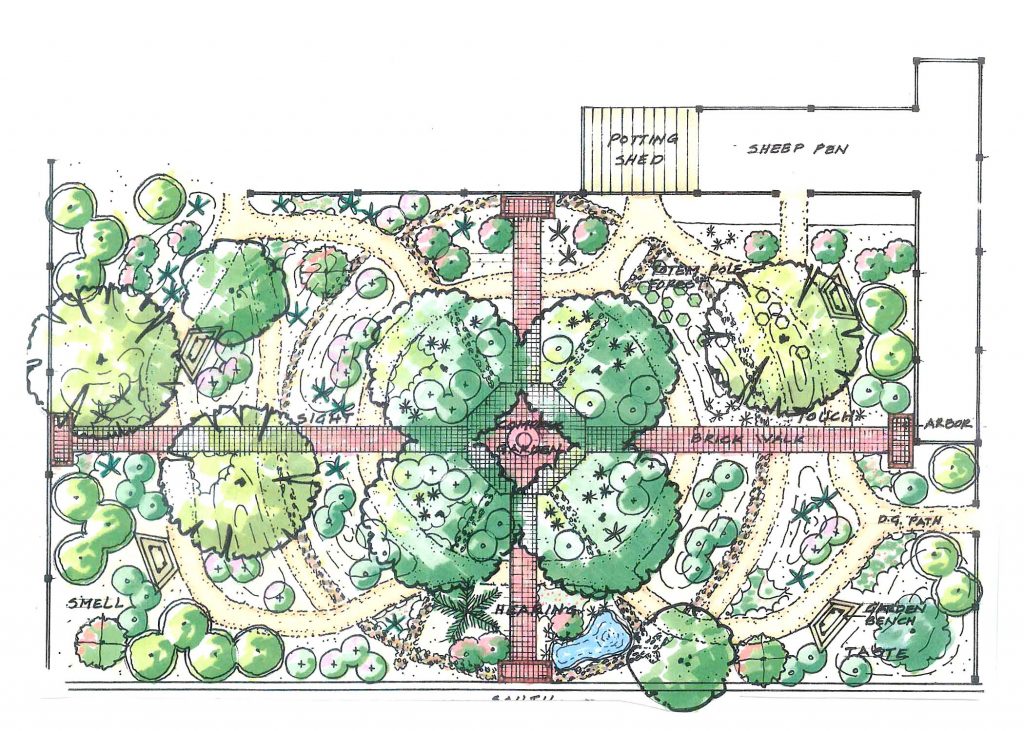
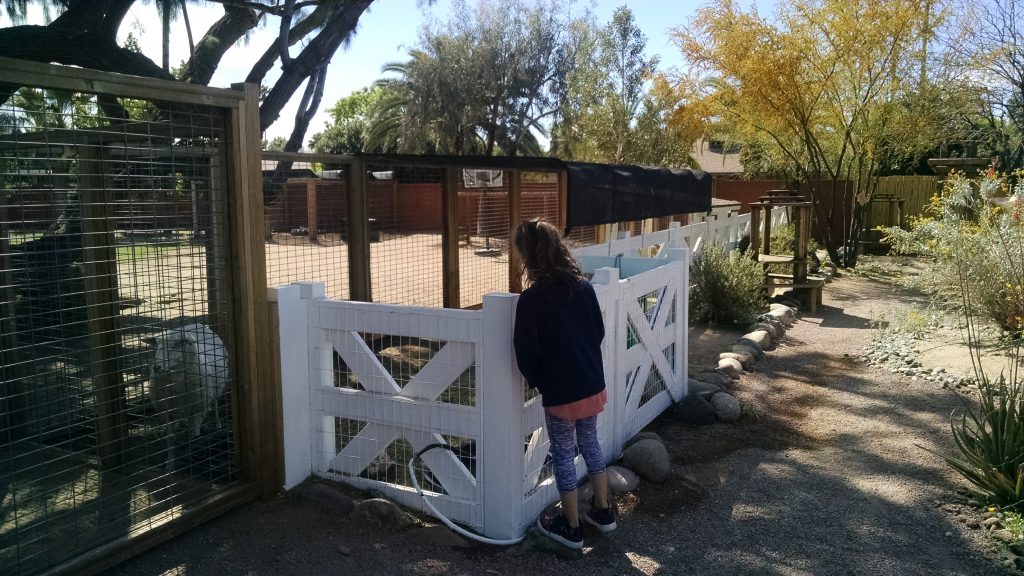
TOP – artist’s rendering of the new Sensory Garden installed in 2012. Of special interest was wrapping the sheep pen around the garden and playground to allow visual access to the kids. Photo RBond 2018

The astronomy exhibit by Amali Vaz demonstrates the scale and configuration of our solar system and its planets.
Before
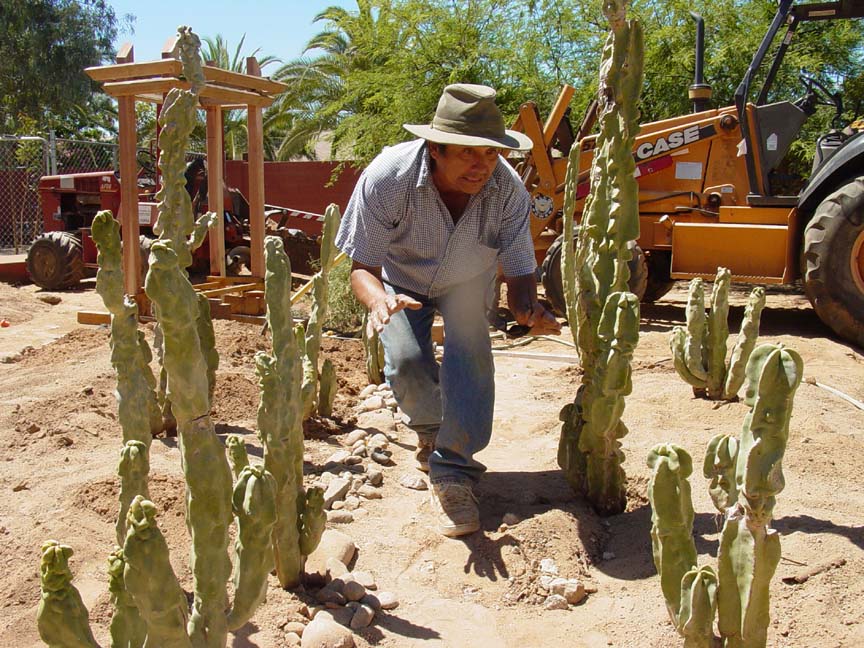
Sensory Gardens new Totem Pole Forest in the planting stage, (Lophocereus schottii) in 2013. Photo RBond
Landscape Contractor and friend Miguel (Native Desert landscaping LLC) traversing the totem poles. Miguel has worked on my projects since 2006.
After
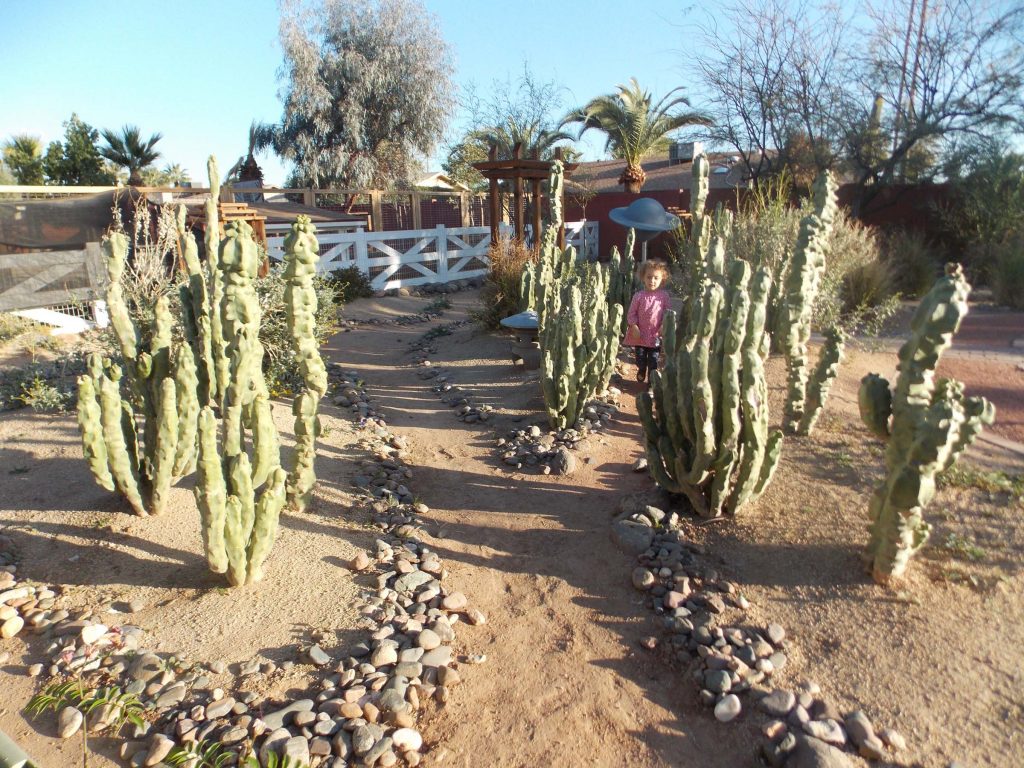
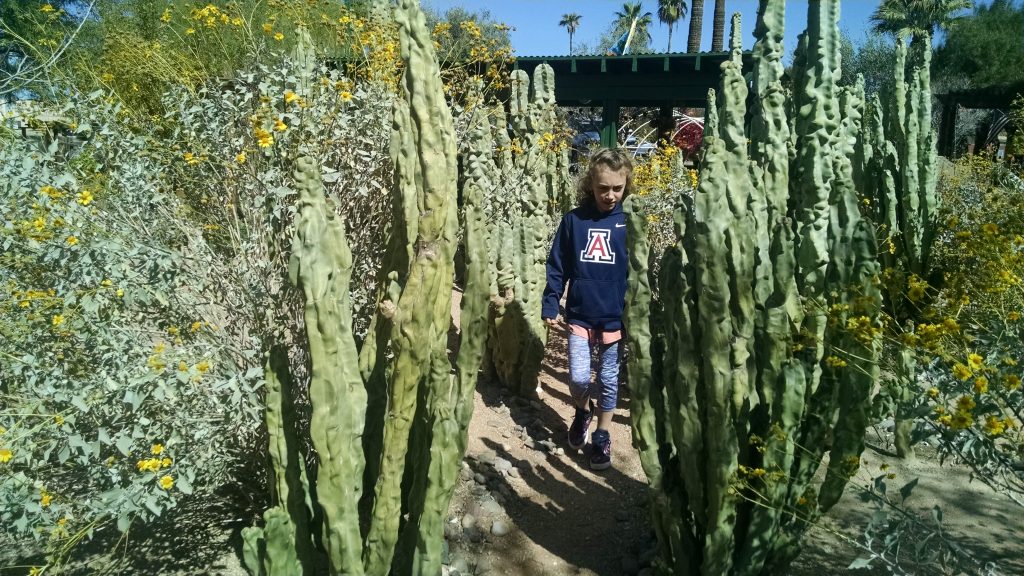
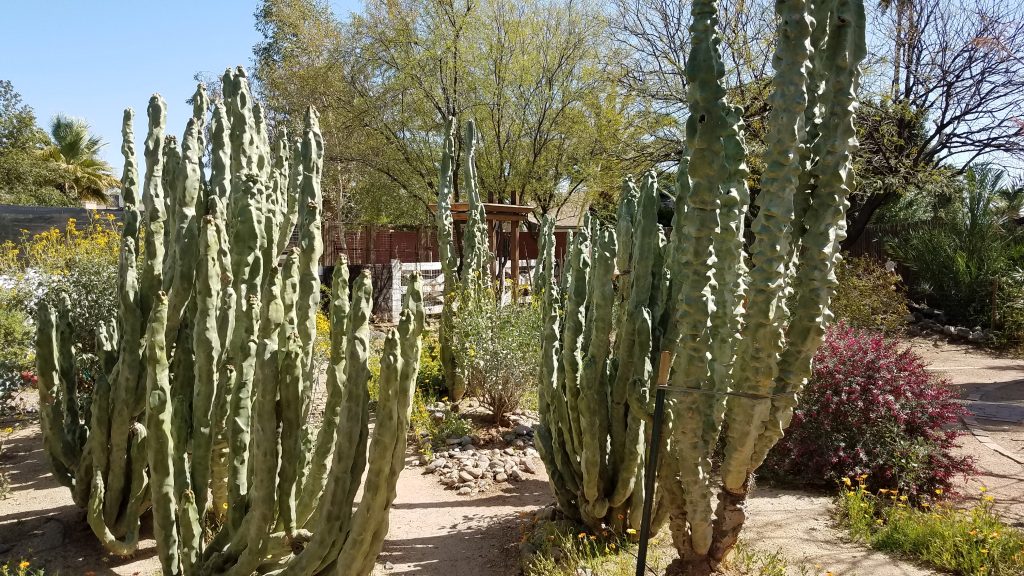
2021
Totem Poles salvaged from the original garden create a challenging harmless obstacle for kids to traverse. Photos RBond 2014 and 2018
Before
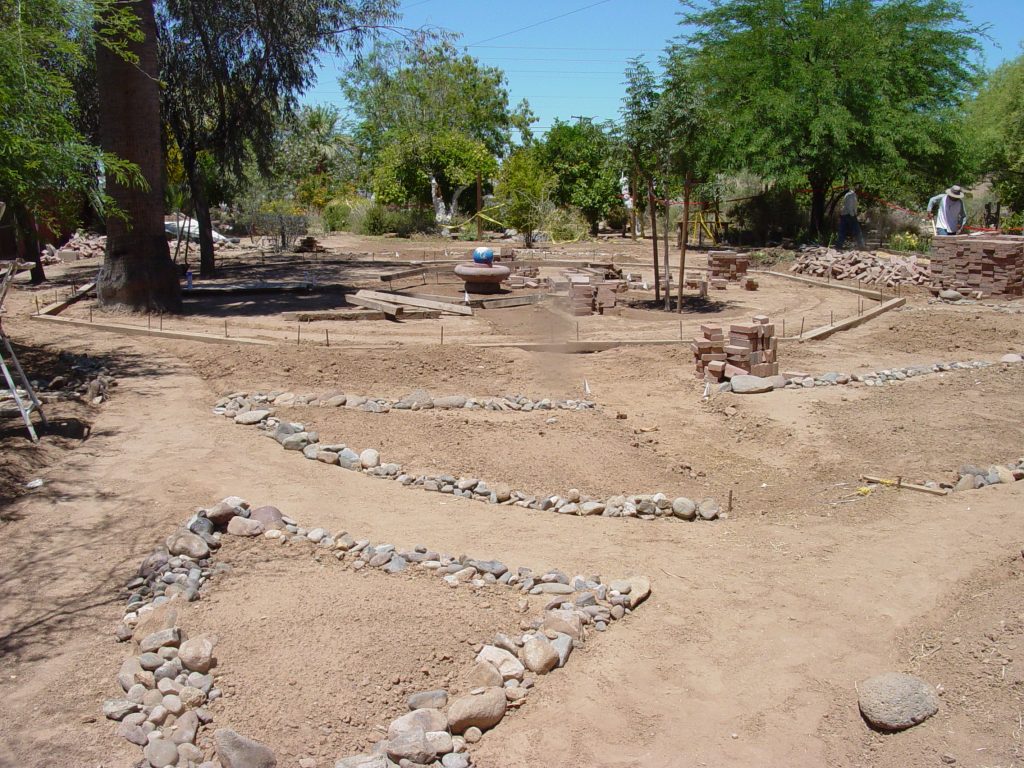
After
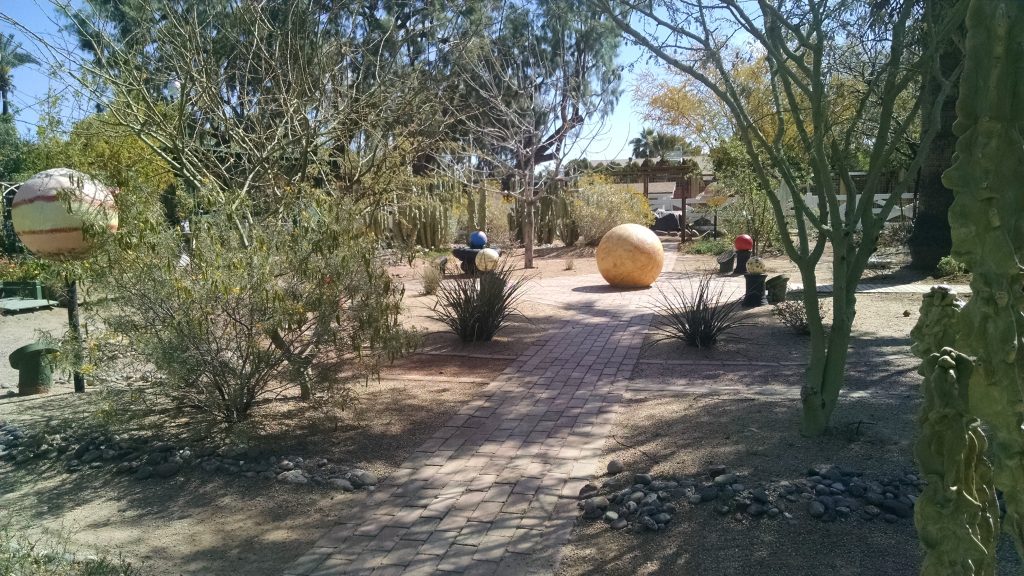
Before and after, the completed Sensory Garden. Photos RBond 2014 and 2018
Glendale Community College AG 164 Demonstration Garden Glendale, Arizona 1992-1994
The Glendale Community College Demonstration Garden was developed in the 1970s – 80s as an outdoor demonstration and teaching area. Complete with green house, nursery, vegetable plot garden and drip irrigated desert landscaping. By 2010 the program was discontinued and the grounds were demolished to make room for a new classroom building. I earned my AAS in Urban Horticulture from here in 1992-1995, working as a work study for Prof Van Meter. In that period I retrofitted the outdoor drip irrigation system and made several modifications including an irrigation manifold display, garden signs and an Australian collection of plants. See Exhibits for more information on how that detail turned out.

The front and back lab area as it was in 1992, note the pay phone…
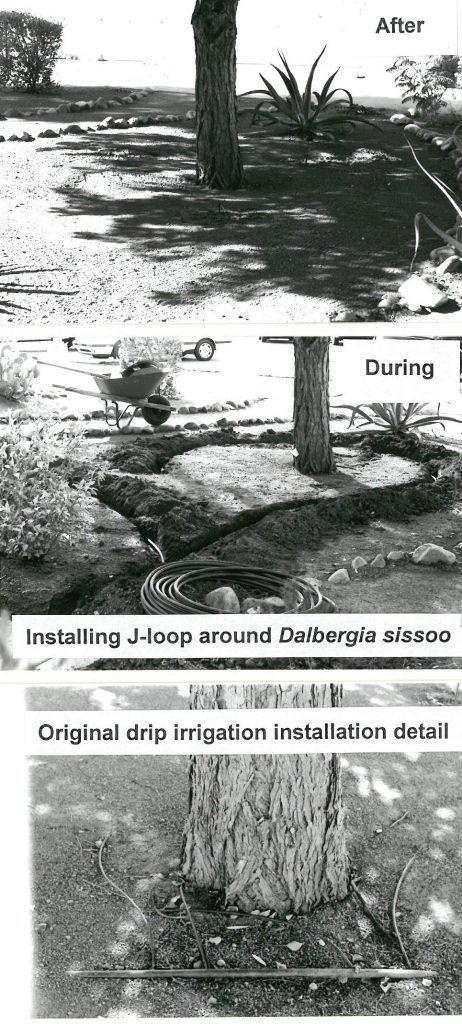
Installing j loops on existing trees and removing black plastic. Readjusting drip emitter locations and burying drip lines turned into a great student project. Photo RBond 1991
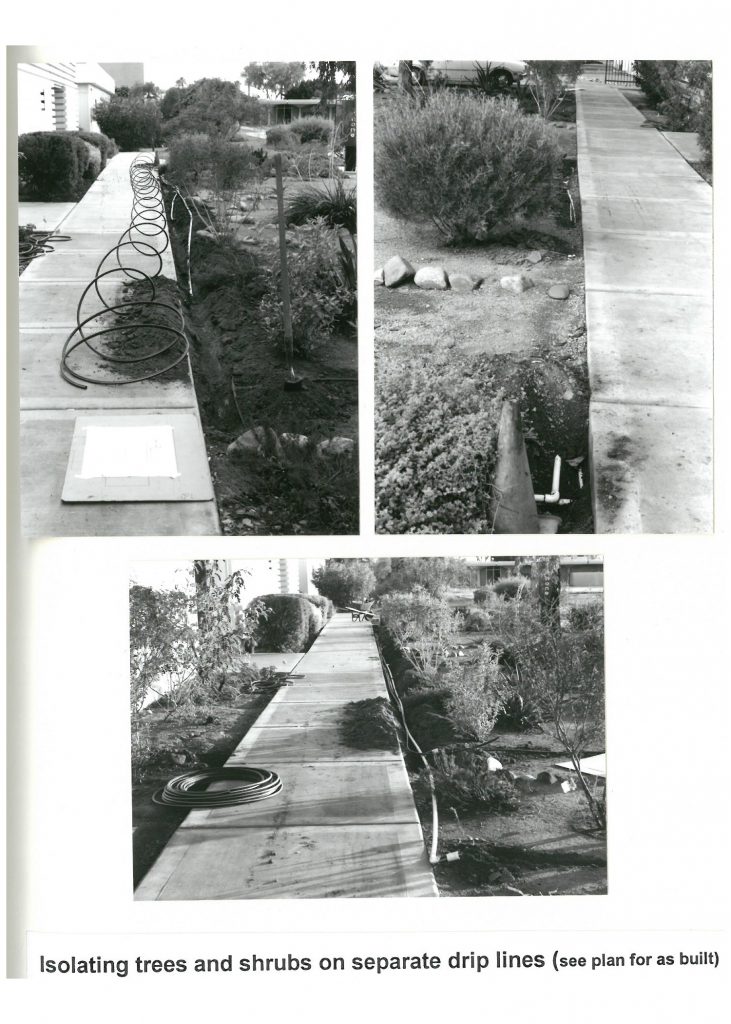
Consolidating trees and shrubs on separate zones. Documenting system for classroom poster. Photo RBond 1991
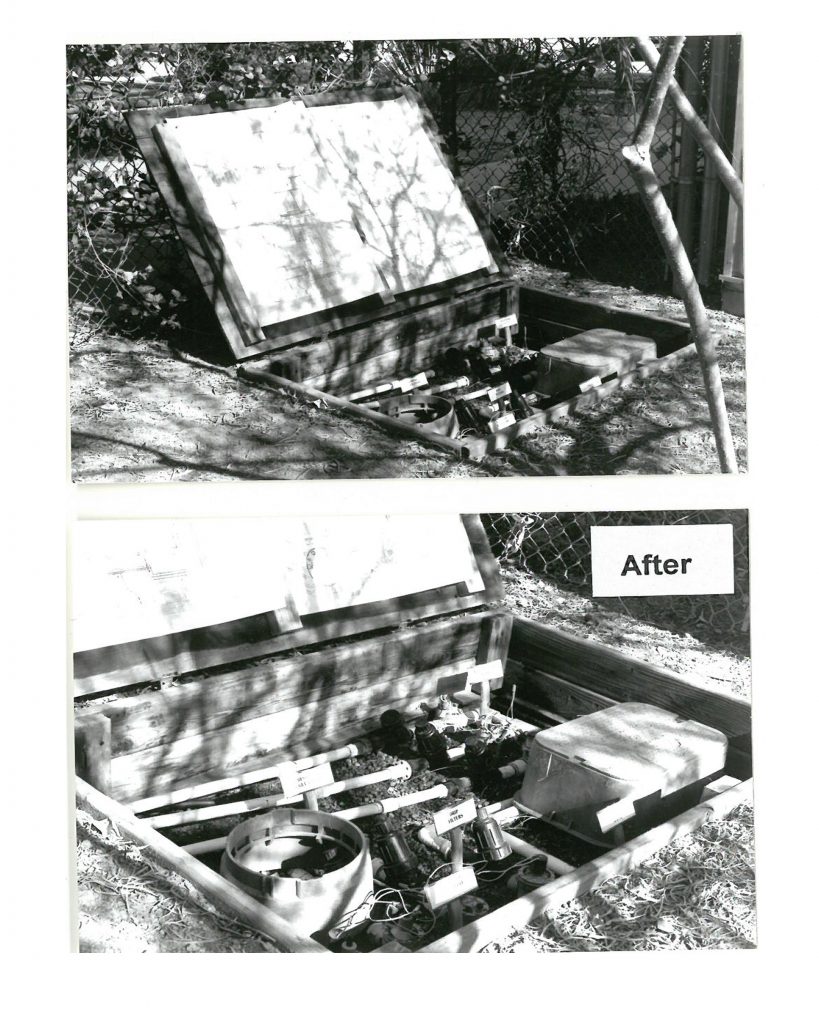
As built irrigation system schematic laminated and posted on back board of irrigation display. Photo RBond 1991
